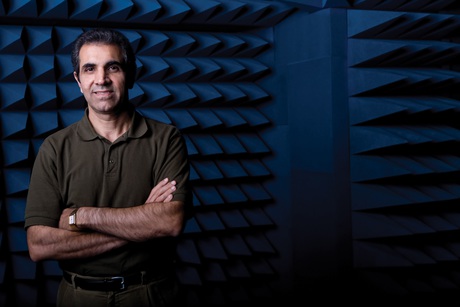Stealthy antennas

For the past four years, Villanova University Electrical and Computer Engineering Professor Ahmad Hoorfar, director of the Antenna Research Laboratory, has been working on wideband, low-profile antennas that provide electronic warfare, jamming and communication capabilities for fibreglass ballistic and blast-resistant armour panels.
Project leader Applied Nanotech, Inc (ANI) — an expert in printed electronics — recently announced the panels’ completion and successful testing in providing multichannel communications and advanced active protection for vehicles, ships and buildings.
According to the company, “The multifunction armour eliminates the need for multiple high-profile communications antenna structures on military vehicles and ships, making them less visible and identifiable in hostile situations.
“The armour-encased antennas also have jamming capability to block radio signals such as those used to remotely trigger explosives, including improvised explosive devices (IEDs).”
In addition to Villanova, program partners include Armortex — a maker of bullet-, blast- and forced entry-resistant products — and the University of Tennessee at Knoxville, which also worked on antenna design and modelling.
Described as challenging yet exciting, Dr Hoorfar explains, “This program was a synergistic combination of functional requirements, materials, novel design, modelling and testing.”
The next steps include further refinement of the developed antenna structure and preparation of a follow-up proposal to investigate its performance on various vehicular platforms of interest to US Department of Defense agencies.
Along with the ANI program, Dr Hoorfar is currently working on the development of efficient microwave imaging techniques for through-the-wall and ground-penetrating radar systems; novel concepts in wideband, low-profile and miniaturised antennas; and the development and application of nature-inspired computational techniques for the optimisation of complex electromagnetic, antenna and microwave structures.
Comms Connect New Zealand returning to Christchurch
Comms Connect is gearing up for its first show of the year, with the New Zealand edition of the...
The new wildfire reality: mapping a response
Firefighter-turned-researcher Chris Dunn is helping pioneer data-driven solutions to tackle...
ARCIA update: LMR is not dead yet
Be it mining, rail, public safety, transport or utilities, everyone is embracing new technology...






